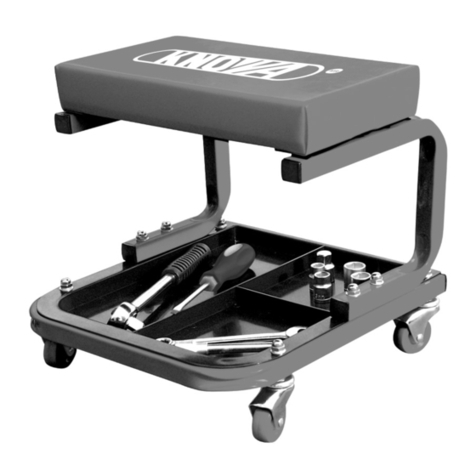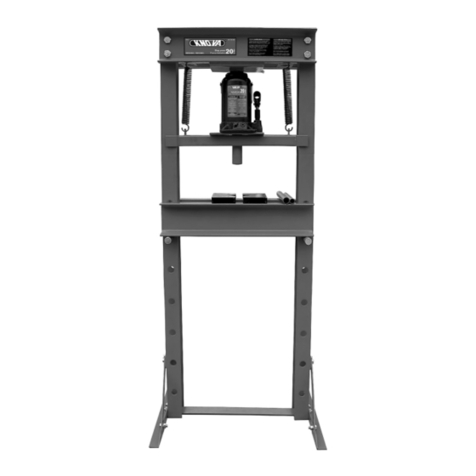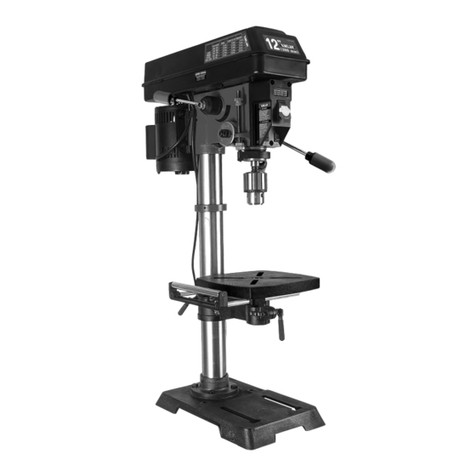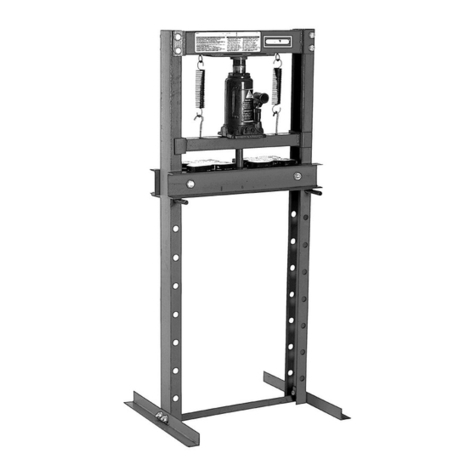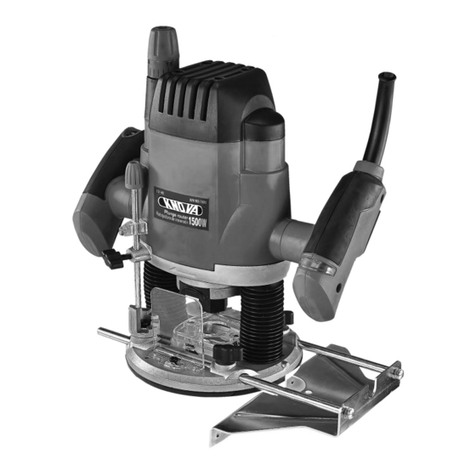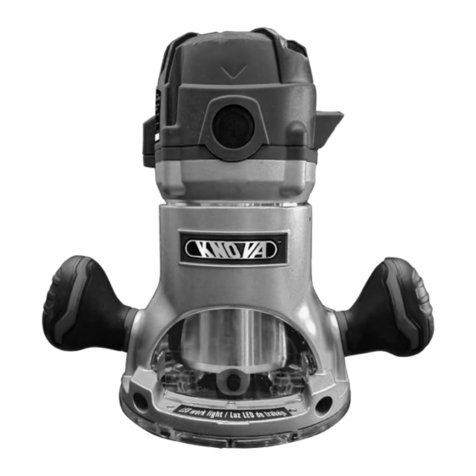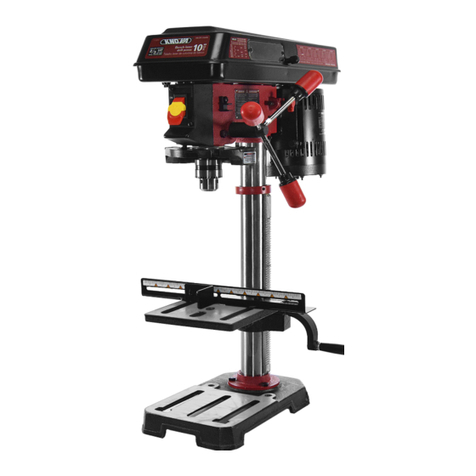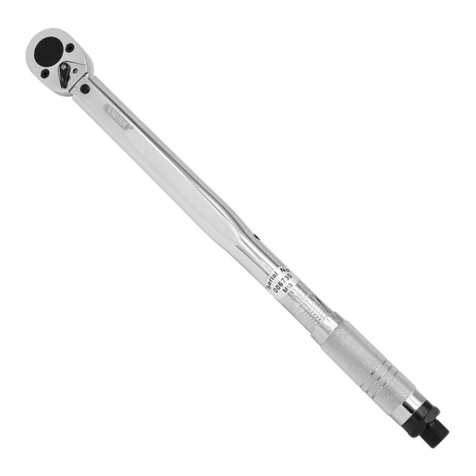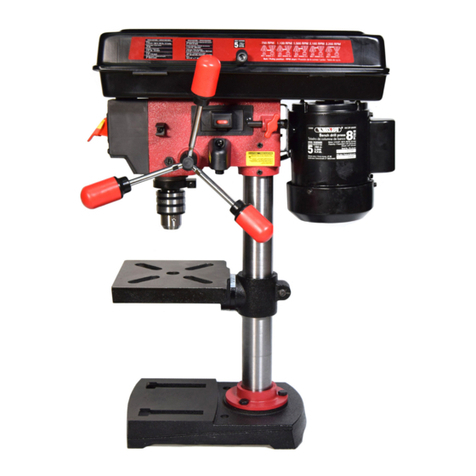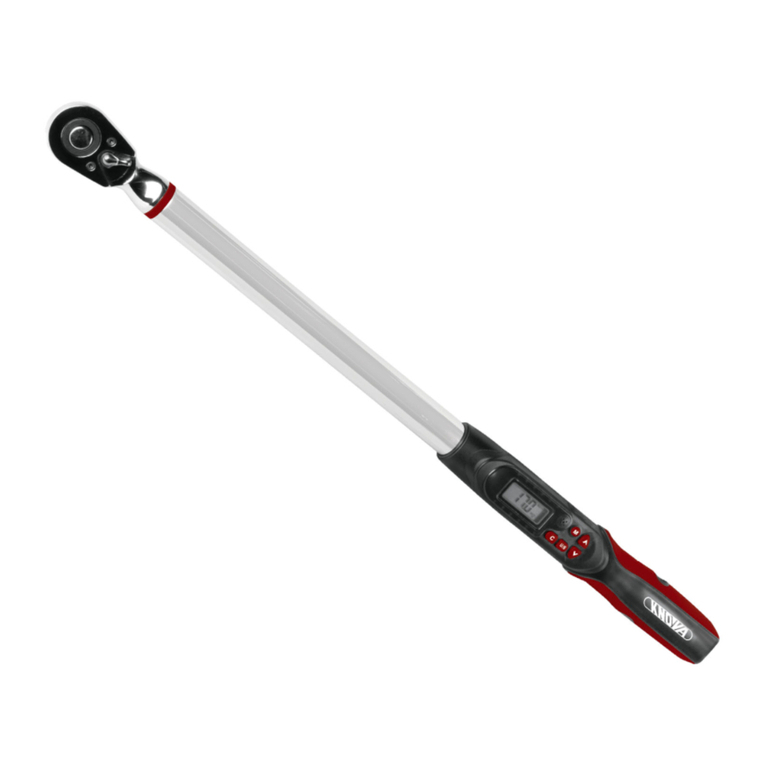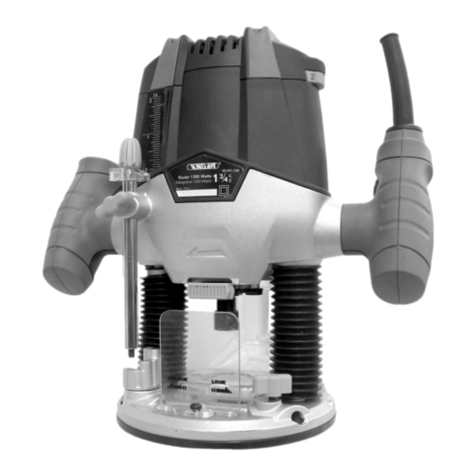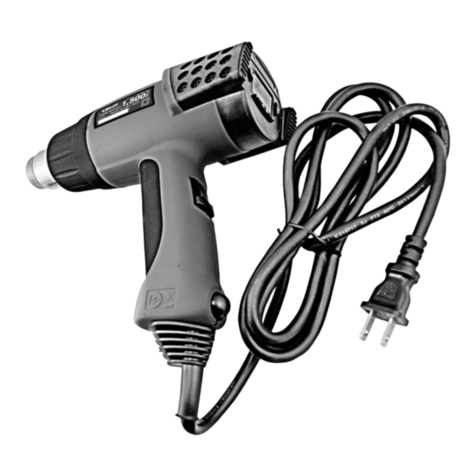
IMPORTANTE
1.
INSTRUCCIONES DE SEGURIDAD Y ADVERTENCIAS
1.1 La capacidad máxima del émbolo es
de 10 ton. NO exceda esta
capacidad nominal.
1.2 Cuando se utilizan tubos de
extensión, la capacidad nominal
siempre se reduce en un 50% por
cada tubo conectado.
1.3 La capacidad máxima del esparcidor
es de 0.5 ton. Y la capacidad máxima
del dedo del pie del ariete y del
émbolo o 0.8 toneladas. NO exceda
estas capacidades nominales cuando
use estos accesorios.
1.4 No use este equipo como un
dispositivo elevador de vehículos o
como un soporte para vehículos.
1.5 Mantenga a los niños y otras
personas no autorizadas lejos del
área de trabajo.
1.6 Retire la ropa suelta. Quite los lazos,
relojes, anillos y otras joyas, y
contenga el pelo largo.
1.7 Siempre use gafas de seguridad
aprobadas por ANSI cuando opere el
kit de reparación.
1.8 Mantenga el equilibrio y el equilibrio
adecuados. No se exceda ni use
calzado antideslizante.
1.9 Solo use este equipo en una
supercie que sea estable. Nivel, seco
y no resbaladizo, y capaz de sostener
la carga. Mantenga la supercie
limpia, ordenada y sin materiales no
relacionados y asegúrese de que
haya una iluminación adecuada.
1.10 NO permita que el vástago del pistón
(R03) se extienda hasta superar la
carrera máxima del émbolo.
1.11 Cuando las válvulas del acoplador
estén desconectadas, siempre use
una tapa contra el polvo para
mantener limpio el sistema hidráulico.
1.12 NO arroje objetos pesados sobre
la manguera y NO tuerza la
manguera. Siempre mantenga la
manguera limpia para evitar daños a
la manguera y los acopladores.
1.13 Mantenga el equipo alejado del
calor o del fuego, ya que puede
dañarlo o debilitarlo.
1.14 NO opere este equipo cuando esté
cansado y bajo la inuencia del
alcohol, drogas o cualquier
medicamento intoxicante.
1.15 NO permita que personas no
capacitadas operen el equipo y NO
le haga ninguna modicación.
1.16 NO exponga el equipo a la lluvia ni a
ningún otro tipo de mal tiempo.
1.17 Use una persona calicada para
mantener el equipo en buenas
condiciones. Manténgalo limpio para
el mejor y más seguro rendimiento.
1.18 Si el equipo necesita reparación
y / o hay piezas que necesitan ser
reemplazadas, haga que sean
reparadas por técnicos autorizados
y solo use las piezas de repuesto
suministradas por el fabricante.
1.19 ADVERTENCIA: Las advertencias,
precauciones e instrucciones
discutidas en el manual de
instrucciones no pueden cubrir todas
las condiciones posibles y la situación
puede ocurrir. El operador debe
comprender que el sentido común y
la precaución son factores que no
pueden incorporarse en este
producto, sino que deben ser
suministrados por el operador.
2. ESPECIFICACIONES
Capacidad calicada: 10 Ton.
Presión de salida de la bomba:
63 MPa (9,137 psi)
Altura mínima cilindro: 322 mm.
Equipo hidráulico portátil 10 Ton.
KN 7402-10PA
Altura máxima cilindro: 452 mm.
Carrera del pistón: 130 mm.
Llenado de aceite: 800 ml.
Peso neto: 31 Kg.
Peso bruto: 32.2 Kg.
Por favor, lea atentamente estas instrucciones, tenga en cuenta las advertencias de las
indicaciones de seguridad, utilice el producto correctamente y con cuidado para el n
para el que está destinado, el no hacerlo puede causar daños a la propiedad y/o lesiones
personales graves, por favor, mantenga este manual de instrucciones de seguridad para
uso futuro.
